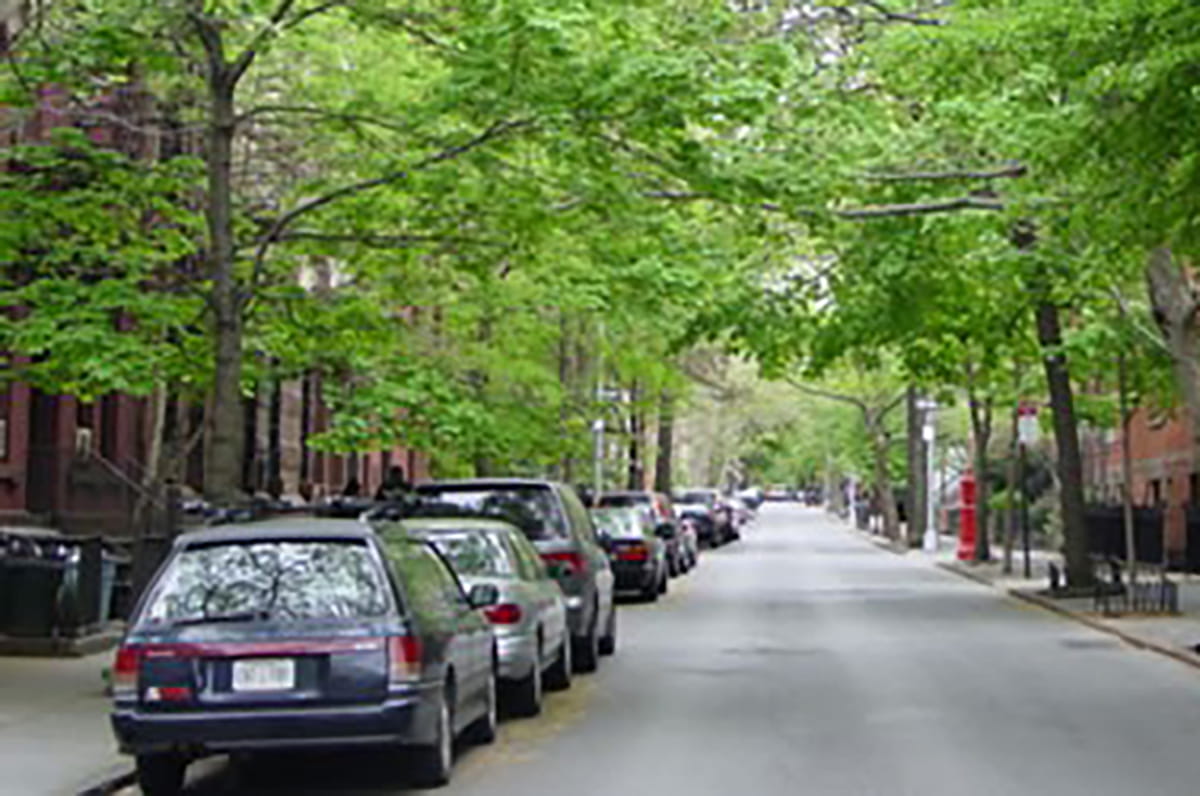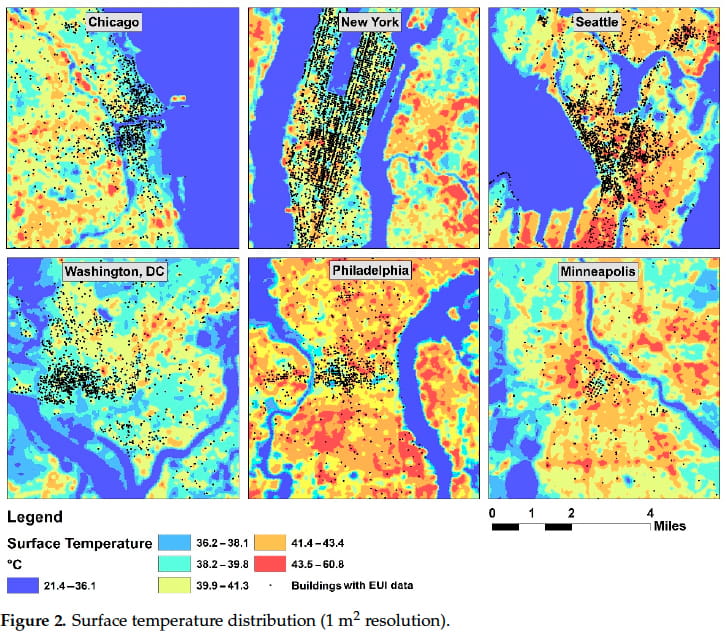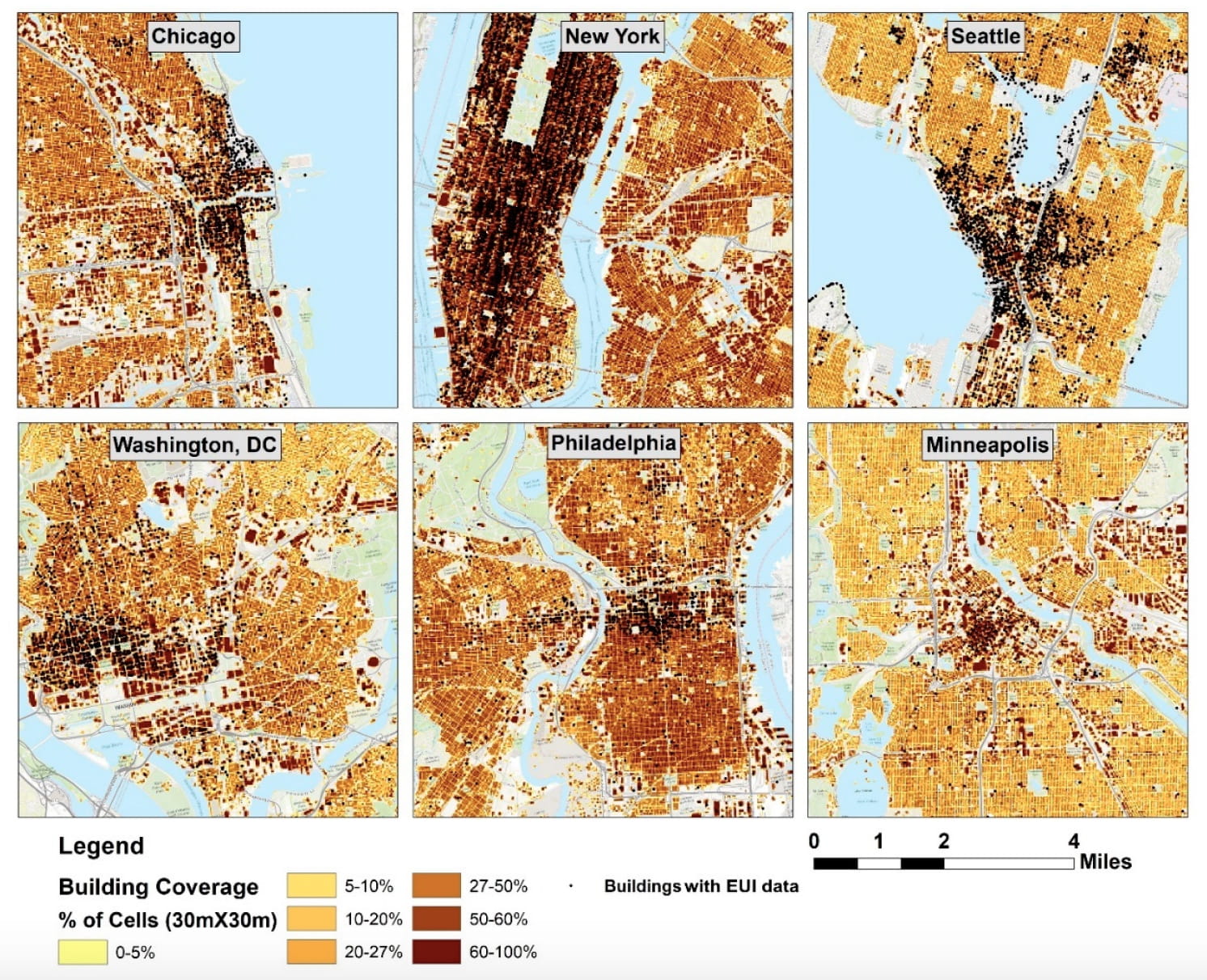Just How Much Do Density and Green Space Affect Urban Energy Use? It Depends on Where You Live.

- Drexel Selects New, World-Class Life Sciences Building at 3201 Cuthbert Street for Medical Research Operations
- Breakthrough on Gene Therapy for Hereditary Spastic Paraplegia
- Drexel Environmental Collaboratory Releases Cross-Sector Findings on Severe Weather Recovery Challenges
- Drexel Launches the Manuel Stamatakis Center for Alternative Investments at the LeBow College of Business

Tree cover and building density can influence how much energy surrounding buildings use — Drexel researchers are trying to quantify their impact.
In the battle to mitigate “city heat” and conserve the energy it takes to keep folks comfortable inside, recent research has shown the importance of urban planning. Tree cover, paved surfaces, the spacing of buildings and green spaces all affect how much energy it takes to offset the “urban heat island effect.” But the relative contribution of these urban form factors has been a matter of debate. In a recently published journal paper, researchers in Drexel University’s College of Engineering, seeking to clarify the matter, presented a method for measuring the impact of each of these factors – and revealed that their contribution to building energy use varies between cities.
Buildings contribute more than half of greenhouse gas emission of North American cities, due in large part to the energy they use for heating and cooling. In recent decades, climate scientists have identified the heat-amplifying effect of surfaces like paved roads, parking lots and building roofs, as a prime culprit behind the steady increase in cities’ energy use.
“Form, through the layout and orientation of urban blocks, vegetation and high albedo materials, and the shading effect of surrounding blocks, changes the microclimate within building networks,” the researchers wrote in the journal Buildings.
Managing the microclimate to avoid excess heating is becoming a priority for cities as they continue to change and grow. But countering urban heat island effect isn’t as straightforward as planting more trees, building parks and increasing green space between new buildings. Perhaps counterintuitively, research in the last few years suggests that increasing urban density – packing people more closely in row homes and apartment buildings – may reduce energy use, by comparison to a more sprawling layout.
To understand the relative energy-saving benefits of a few more units in an apartment building versus a few more trees next to it, Drexel’s Nariman Mostafavi, PhD, who led the research, and his collaborators, gathered public geospatial data on surface temperature, tree cover and impervious surfaces; U.S. Census population data; and open-source information on building characteristics (i.e. type, age, value) and housing unit layouts in several U.S. metropolitan areas that track and report building energy use.

The team looked at 12,700 buildings situated in areas with five different levels of density located in Washington, D.C., New York City, Philadelphia, Chicago, Seattle, Minneapolis and Austin, Texas. Using a step-by-step method to analyze progressively larger groupings of buildings in each type of density level, the team was able to tease out the distance within which buildings share a microclimate pertaining to building energy consumption.
“The first question we wanted to answer was what distance from a building shall be taken into account when the impact of urban density on building energy is of concern,” Mostafavi said. “Secondly, we wanted to understand what the relationship was between different urban form parameters and building energy use, in different cities.”
Their efforts aimed to reveal how far from a building vegetation, or pavement, or other buildings could be located and still influence its energy use, also to determine which factors had a larger impact on building energy use.

The results suggest that in sprawling cities, like Austin, the morphology within a 1.5-kilometer radius better explains the urban form effect on energy use; while in a more densely packed city, like New York City, the radius of impact for urban form is more relevant within half a kilometer around a given building.
But the most significant finding, according to Mostafavi, might be that the relationship between urban form/density and energy use varies across cities.
“These findings show that energy use is related to density but it’s city specific and distance specific,” Mostafavi said. “The important thing is that this methodology we developed is a way for each city to understand the impact of urban form and density within their city and incorporate it in future development plans.”
Of all the form factors included in the study, tree-cover area, impervious surface area and building density showed a more consistent impact across all urban areas studied.
To get a clearer picture of the factors that affect building energy use, the researchers suggest, more cities should track energy use data and compile datasets on building stock. While they were able to obtain energy use data for the seven cities studied, the research could have been much broader if more cities made this information available, or if reporting was standardized in urban areas across the country.
“With the current trends of urbanization and the expected 2.5 billion people urban population growth projected globally through 2050, energy demand of cities will only increase in the future. Cities are a big problem for us when it comes to energy consumption and carbon emissions, but at the same time they could also be the solution,” Mostafavi said. “If we want to address the environmental crisis — in a way that will have a big impact — reducing the energy consumption of cities is a great place to start.”
This research was supported by the National Science Foundation.
Drexel News is produced by
University Marketing and Communications.